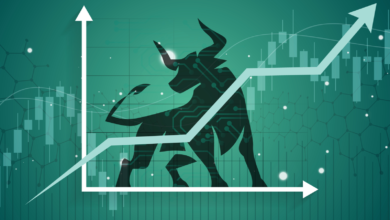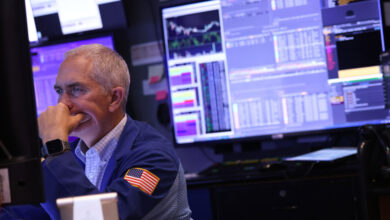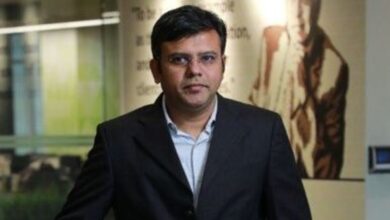A global technology fund could be an ideal vehicle for investors, says Trideep Bhattacharya of Edelweiss AMC

To mitigate potential volatility and downside risks in portfolios, diversification across asset classes, sectors, and geographies is essential, says Trideep Bhattacharya- Chief Investment Officer – Equities, Edelweiss AMC.
In an interview with MintGenie, Bhattacharya said that India has benefited from a combination of local and global trends, including the Indian government’s favourable stance towards infrastructure development, geo-political diversification through initiatives like China+1, and the demographic dividend poised to favour India over the next 25 years.
In your opinion, does the interim budget for this year align with the expectations of the market?
Although it was an interim budget in an election year, it adeptly strikes a balance, prioritizing sensibility over populism. It showcases India’s unwavering commitment to infrastructure development, coupled with a steadfast adherence to fiscal prudence.
What are your predictions or expectations for the financial year 2024-2025?
We anticipate that the financial year 2024-25 will be a year marked by transitions, primarily driven by three key expectations:
- With approximately 50% of the top 20 nations undergoing national elections in 2024, we foresee a shift in the macro debate from economics to politics. This is especially pertinent as the world’s two largest democracies, the US and India, conduct elections to choose their governments for the next five years.
- We expect global economies to transition from experiencing increasing inflation in 2023 to a phase of disinflation in FY 2024-25. Consequently, central banks are likely to engage in debates about the pace of interest rate adjustments as we progress through the year.
- Lastly, we project that global growth will reach its lowest point in 2024. In other words, we anticipate a slowdown in GDP growth rates in the first half of 2024, followed by an eventual rebound in 2025.
Despite the global economic challenges, India seems to be holding its ground well. What is your perspective on India’s resilience amidst the global economic scenario?
We believe that India’s resilience amid global turbulence stems from its reliance on domestic earnings drivers, rather than being heavily dependent on exports. Despite the challenging global macroeconomic conditions, India’s robust domestic demand has helped sustain earnings growth.
Additionally, India has benefited from a combination of local and global trends, including the Indian government’s favourable stance towards infrastructure development, geo-political diversification through initiatives like China + 1, and the demographic dividend poised to favour India over the next 25 years.
Given that it’s an election year, what impact do you anticipate this having on the financial markets, and how should investors navigate through it?
We expect the upcoming elections in 2024 to introduce volatility into financial markets. Furthermore, we observe that large-cap valuations are favourable, whereas mid- and small-cap companies exhibit strong earnings momentum.
Therefore, we recommend investors allocate their equity investments towards balanced portfolios across market capitalizations, such as multi-cap or flexi-cap funds.
Can you discuss any specific investment themes or trends that you believe will shape the market landscape in the coming years?
Anticipating a period of “noisy macro conditions” characterized by slowing growth rates, especially in the first half of 2024, we believe that aligning portfolios with areas of earnings resilience is the prudent approach.
In this context, we anticipate that earnings will demonstrate resilience in sectors such as industrials, power-related industries, non-banking financial companies (NBFCs), and real estate. Lastly, we identify the IT services sector as the dark horse for 2024, positioned as a strategic play on the bottoming out of global growth throughout the year.
Given the increasing prevalence of digital currencies and blockchain technology, what are your thoughts on their role in the future of finance and investment?
Digital currencies and blockchain technology have the potential to revolutionize finance and investment by offering decentralized, transparent, and efficient means of value transfer and record-keeping. Their potential to democratize access to financial services and create new investment opportunities is significant, but regulatory challenges and volatility remain key considerations for their widespread adoption.
Are you optimistic about the technology sector’s performance, and if so, what are the reasons behind your bullishness?
We hold an optimistic outlook for the technology sector’s performance over the next three years, driven by both cyclical and structural factors.
We view the sector as a cyclical play on the anticipated global economic rebound in CY25. Furthermore, we are bullish on the structural drivers of the technology sector as well, including increasing digitalization across industries, accelerated adoption of cloud computing and artificial intelligence, and ongoing innovation in cybersecurity and biotechnology.
In this context, a global technology fund could be an ideal vehicle for investors with an appetite for thematic funds to play the trends described earlier.
What measures do you recommend for investors to mitigate potential volatility and downside risks in their portfolios?
To mitigate potential volatility and downside risks in portfolios, diversification across asset classes, sectors, and geographies is essential. Additionally, regular portfolio rebalancing, risk assessment, and maintaining a long-term investment horizon can help manage fluctuations.
When considering investment options, what criteria should individuals new to investing focus on when choosing between large-cap, mid-cap, or hybrid funds, and what advice would you provide to help them navigate these choices effectively?
New investors should focus on their risk tolerance, investment goals, and time horizon when choosing between large-cap, mid-cap, or hybrid funds. Large-cap funds offer stability but may have slower growth, suitable for conservative investors. Mid-cap funds offer higher growth potential but come with increased volatility, suitable for moderate risk-takers. Hybrid funds combine stocks and bonds, balancing risk and return.
Consulting a financial advisor, conducting thorough research, and starting with diversified funds can help new investors navigate these choices effectively, ensuring alignment with their financial objectives.
Unlock a world of Benefits! From insightful newsletters to real-time stock tracking, breaking news and a personalized newsfeed – it’s all here, just a click away! Login Now!




